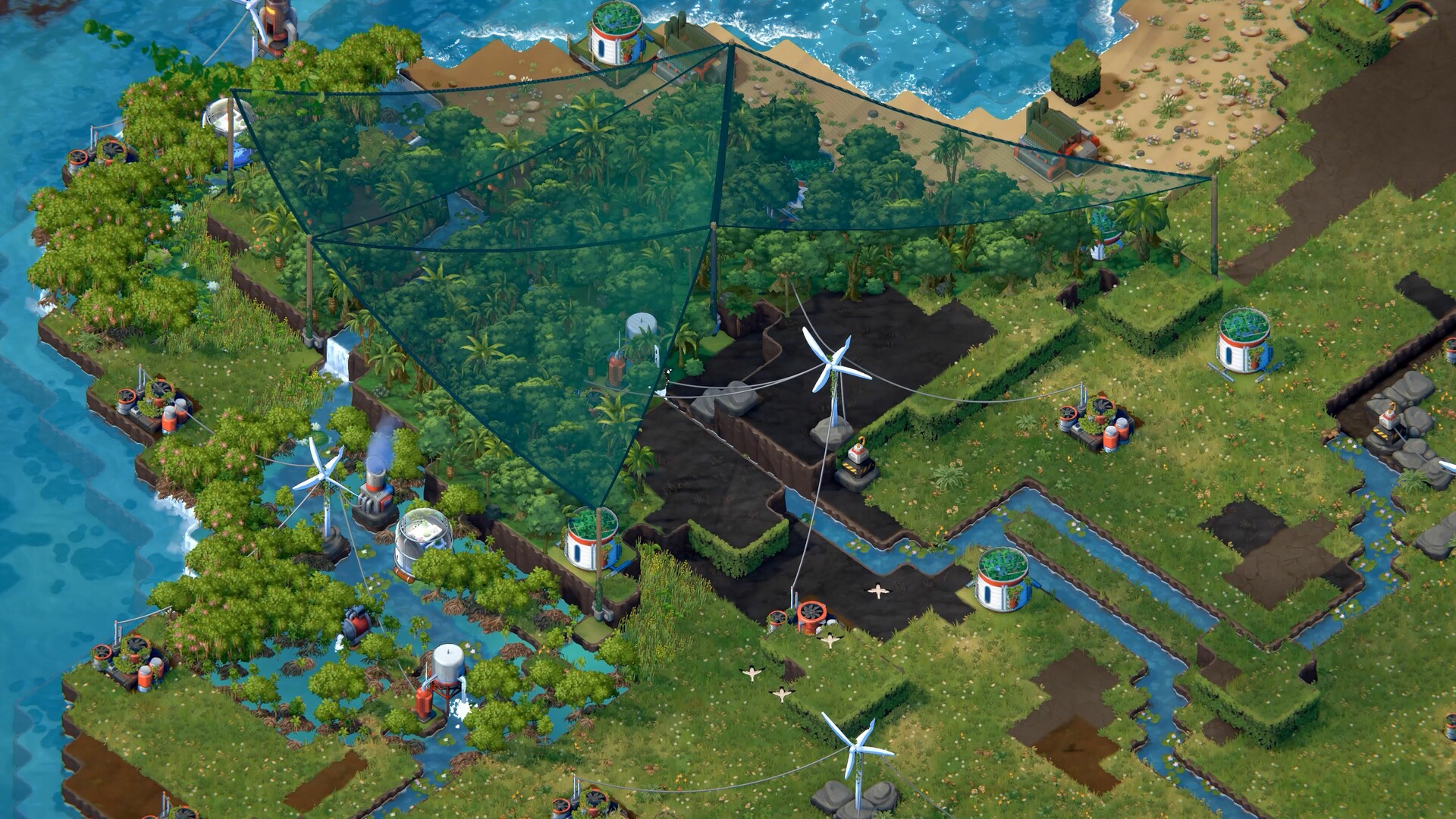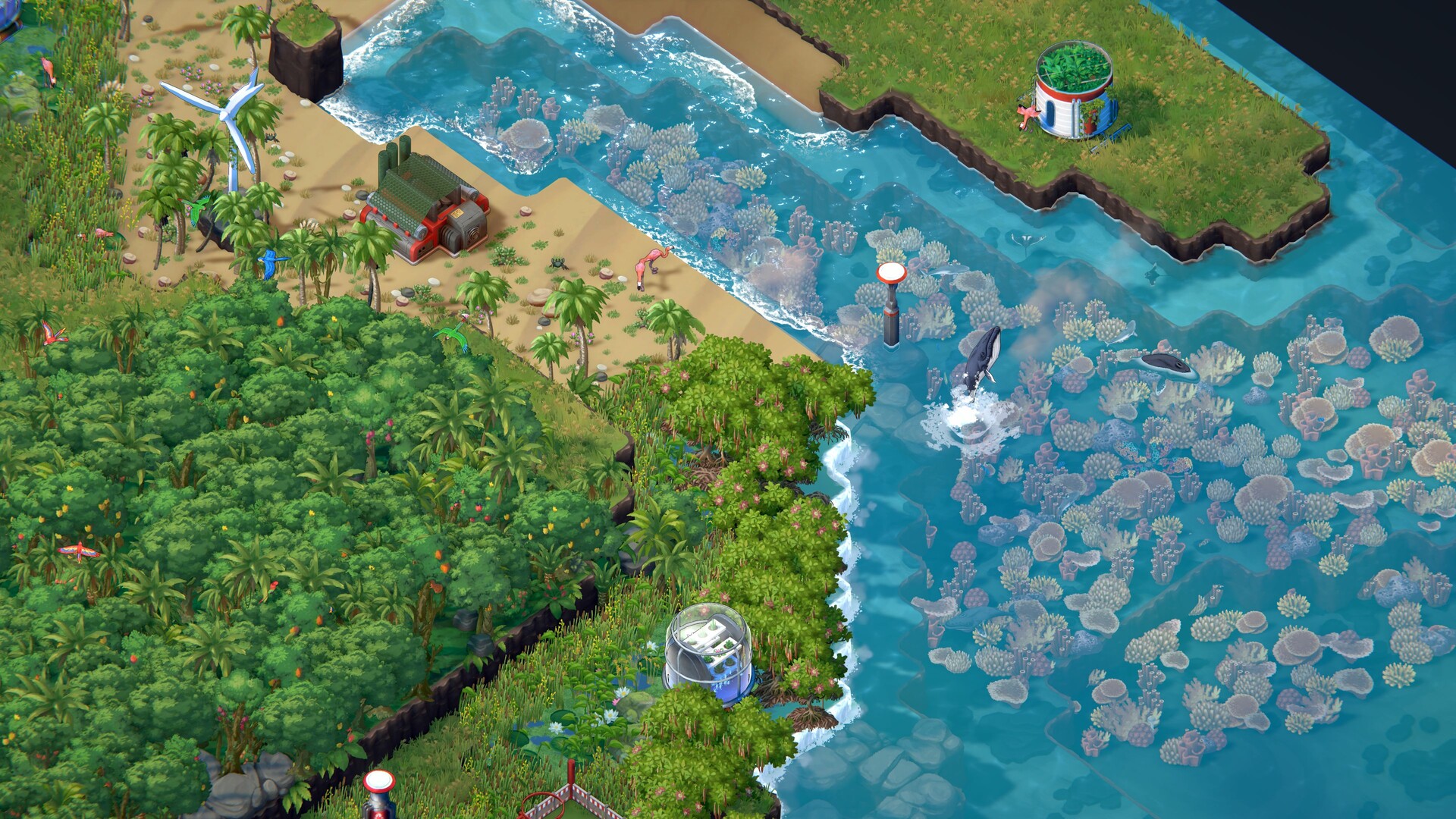I'm loving the chill vibes and quiet challenges of 'reverse city builder' Terra Nil
Restoring dead biomes to life is soothing and comforting, and sometimes quite tricky.

Few things feel as incongruous as setting a beautiful patch of grass and trees on fire in "reverse city builder" Terra Nil. The environmental strategy game is all about restoring nature to dead, barren maps using eco-friendly technology: wind turbines to provide electricity to your buildings, toxin scrubbers to create clean soil from polluted dirt, irrigators to seed the ground and grow greenery, and pumps to turn empty riverbeds into gurgling streams.
Each step that turns dull gray wasteland into lush green meadows not only earns points to spend on more nature-restoring machinery but is satisfying and strangely comforting to witness. So it feels deeply weird to use some of those machines, like a solar amplifier and a combustor, to brutally torch some of that greenery to huge, sizzling patches of ash.
But hey, Mother Nature goes hard. Forest fires, as horrifying and destructive as they can be in the real world, come with benefits like clearing the forest floor of underbrush and dead foliage, nourishing the soil, killing disease-bearing insects, and removing weaker plants from the ecosystem so the stronger ones receive more nourishment and sunlight. In Terra Nil, sometimes you've gotta burn something down even if you've just spent long minutes building it up.
I've been playing a new build of Terra Nil that lets me rehabilitate the first two biomes of the game. The first map works mostly the same as when I played it a couple years ago, strategically placing nature-restoring machines, making the world turn green, and then cultivating new mini-biomes like marshy wetlands, thick forests, and shrublands pollinated by beehives. The final step is to remove the machines I built to make all that happen. The rivers become a network for recycling ships to travel the map and take everything apart, and then use the materials to construct a hovercraft that lifts off and flies away. All that's left behind is nature. There's no sign any human-made tech was ever there at all.
The second biome is a bigger and even more interesting challenge. Instead of a continent you're on an island, which includes sections of ocean, four mini-biomes to grow and balance instead of three, and fewer riverbeds meaning you need to establish a monorail system across the island to move equipment around.
With scrubbers oxygenating the oceans and cloud-seeding machines adding humidity to the atmosphere I can start getting properly tropical. Rivers were satisfying to create on the first map, but I have to say generating sandy beaches on the shoreline is even more appealing, especially when a notification pops up telling me that crabs have appeared. One of the quiet joys of Terra Nil is seeing animals begin to arrive in the world you're working on, then zooming all the way in on the map until you spot one. Sure enough, a tiny, adorable crab is scuttling around on the beach I just created. Beautiful!
That's just the start, though. Around the cliffs on the map I can place shadecloth to form canopies, underneath which grow towering tropical trees and eventually a massive rainforest. I can salinate the wetlands so mangroves will grow, and build sandy little islands in the oceans to place machines that can reach the farthest edges of the map to scrub even more ocean water clean. And as I lengthen my monorail line I can transport coral from my inland factories out to the ocean, where tropical fish begin appearing. Building an observatory lets me discover various forms of wildlife inhabiting the new biomes: I thought seeing a crab was exciting until I spotted a damn whale. A whale, in my beautiful ocean that was just minutes ago polluted gray water! It's a kick.
Keep up to date with the most important stories and the best deals, as picked by the PC Gamer team.
With so many more machines to build in this second biome, recycling them is much trickier, as I have to build monorail lines that stretch out to reach everything and then send a little recycling drone down the line to pack all that equipment up (including the very line it's riding). There's much more strategy and planning in Terra Nil than I expected, and as my points grow low I have to undo some moves and really think about how I can manage to build new machines within my shrinking budget and use the fewest number of transport lines to cover the greatest amount of territory.
But it's all worth it when the final drone hoovers up the last few machine parts and I'm once again left with nothing but nature to admire. And if you're not up for the strategic challenge, there are difficulty settings you can adjust that will let you do more gardening and less planning.
As a bonus, finishing a level in Terra Nil lets you click the "Appreciate" button, which means you can sit back and enjoy as the camera slowly pans over the glorious green landscape, watching frogs, ducks, butterflies, and other wildlife frolic in the reborn world. It's the best, nothing but scenery and good vibes. Frankly, every game should ship with an "Appreciate" button from now on. You'll be able to appreciate Terra Nil yourself when it launches on March 28.

Chris started playing PC games in the 1980s, started writing about them in the early 2000s, and (finally) started getting paid to write about them in the late 2000s. Following a few years as a regular freelancer, PC Gamer hired him in 2014, probably so he'd stop emailing them asking for more work. Chris has a love-hate relationship with survival games and an unhealthy fascination with the inner lives of NPCs. He's also a fan of offbeat simulation games, mods, and ignoring storylines in RPGs so he can make up his own.



